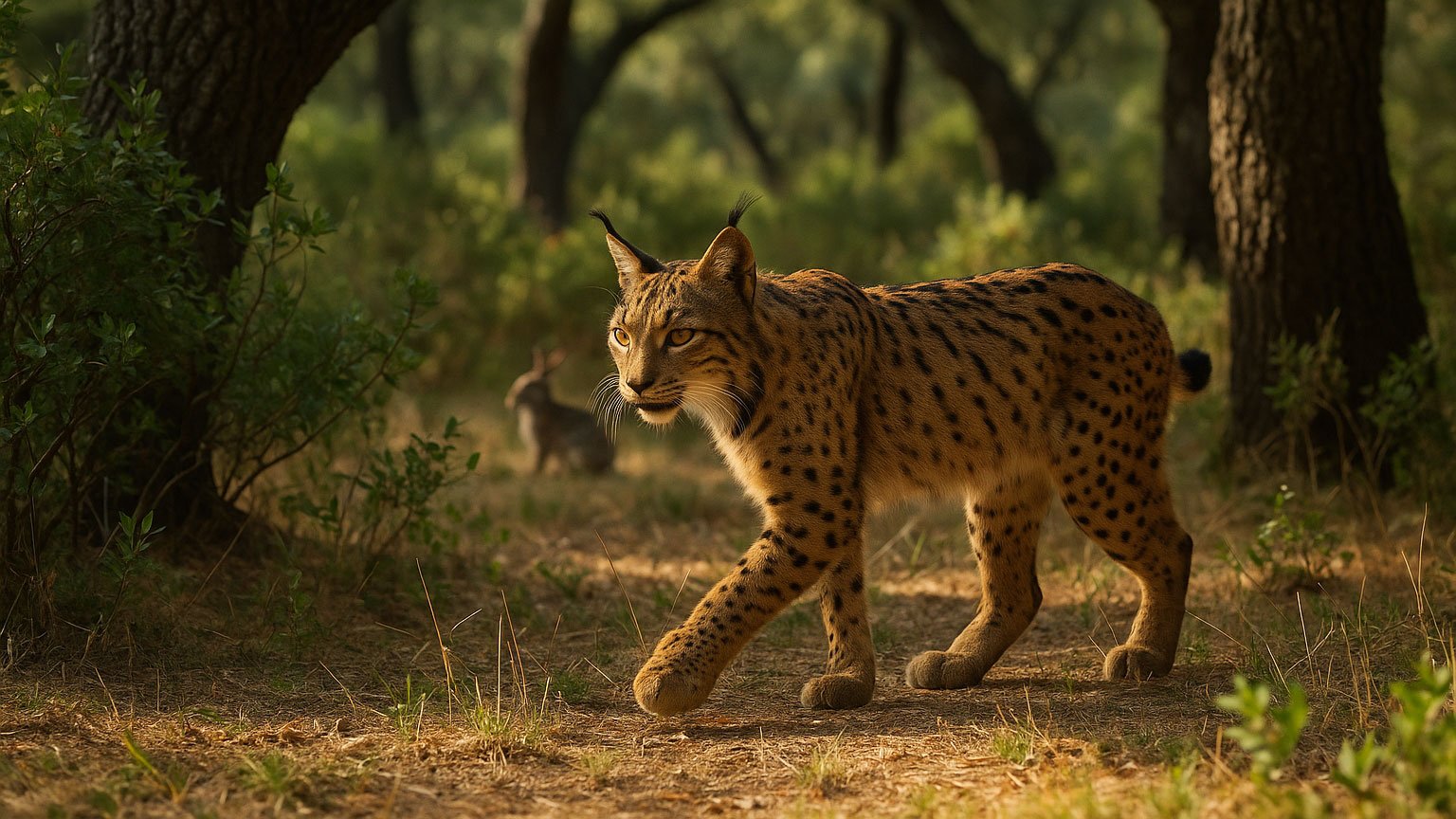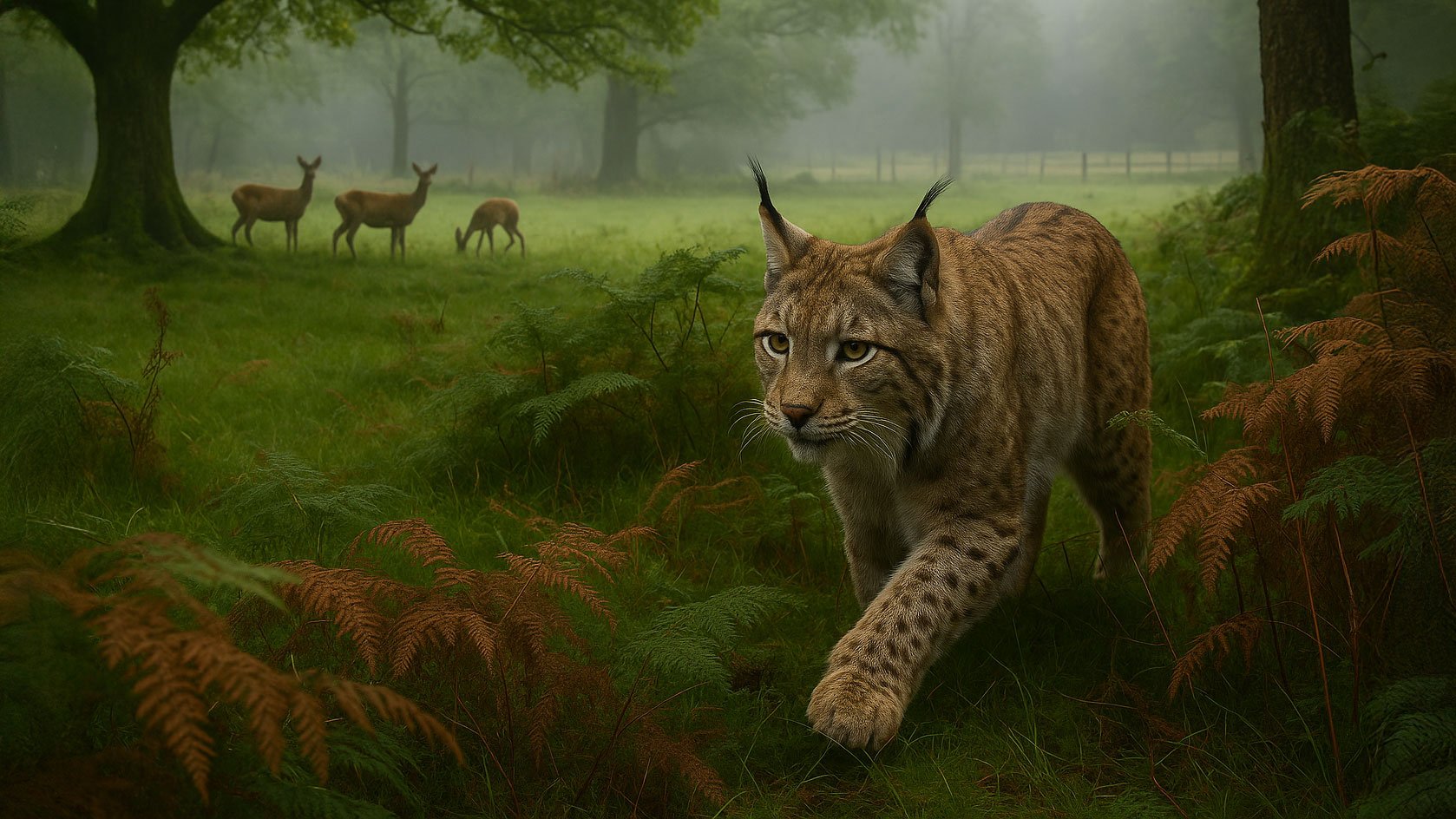Whispers in the Cork Forest: How the Iberian Lynx Defied Extinction
In the rustling shadows of Portugal’s cork oak forests, a ghost once prowled—silent, rare, and nearly forgotten. The Iberian lynx, with its tufted ears, luminous eyes, and dappled coat, had been slipping into legend, one poaching trap and vanishing rabbit at a time. By 2001, only 62 mature individuals remained in the wild. Conservationists called it “the most endangered cat species in the world.” The lynx was becoming a whisper of what once roamed freely across Spain, Portugal, and even into southern France.
But nature, when nurtured, finds a way.
Fast forward to 2024, and that whisper has grown into a roar of hope. The Iberian lynx has clawed its way back from the brink, with the population now topping 2,000 individuals. It’s one of the most successful recoveries of any wild cat ever recorded—and one of the most heartening stories in wildlife conservation.
From Crisis to Comeback
For decades, the Iberian lynx suffered the perfect storm: habitat loss, road kills, rabbit diseases, and poaching. Once abundant across the Iberian Peninsula, by the early 2000s it was confined to two fragmented populations in southern Spain. Portugal’s lynxes had all but vanished.
This apex predator depends on a steady supply of rabbits, which make up 75% of its diet. When rabbit populations collapsed due to myxomatosis and rabbit hemorrhagic disease, so did the lynx’s numbers. Add to that human encroachment and car collisions, and extinction seemed inevitable.
But conservationists didn’t give up. They rolled up their sleeves—and the results are astonishing.
A Blueprint for Recovery
The Iberian lynx story is not just about saving a species; it’s a masterclass in collaborative, science-driven conservation.
Habitat Restoration: Through reforestation and land management, the lynx’s suitable habitat ballooned from just 19 square miles in 2005 to over 1,280 square miles by 2024. Forest corridors now stitch together fragmented landscapes, giving lynxes room to roam, hunt, and breed.
Rabbit Revival: Protecting the lynx meant protecting its prey. Rabbits received full legal protection, and landowners partnered with conservationists to boost rabbit numbers—sometimes by reintroducing them, sometimes by altering land to make it more rabbit-friendly.
Genetic Rescue: Over 400 lynxes have been bred in captivity and reintroduced into the wild, carefully placed to strengthen genetic diversity. The breeding program has a remarkable 70% success rate.
People Power: WWF-Spain secured custody agreements with 18 private estates covering over 62,000 acres. Educational campaigns reached over 100,000 people, reducing poaching and fostering local pride. These aren’t just lynx territories—they’re lynx communities.
Wildlife Crossings: Road deaths were reduced through the creation of underpasses and overpasses in high-risk areas. These green corridors aren’t just safer for lynx—they benefit countless other species too.
Portugal’s Prowling Promise
While Spain still hosts the majority of lynx, Portugal’s comeback is just as vital. In the Guadiana Valley alone, there are now 291 lynxes, including 53 breeding females and 100 cubs as of 2023. Sightings have also begun to trickle in from new areas, raising hope that regions like the Upper Douro Valley could soon see lynx reestablish themselves.
Though there are no stable populations in the Douro Valley yet, conservationists are preparing the land—like setting a table before the guest arrives. Forest restoration, rabbit management, and habitat monitoring are paving the way for lynxes to return.
Not Out of the Woods Yet
Despite the good news, the Iberian lynx remains listed as Vulnerable on the IUCN Red List. Threats still loom: rabbit disease outbreaks, road accidents, poaching, and the unknowns of climate change. The IUCN’s Green Status of Species assessment classifies the lynx as “Largely Depleted,” meaning it has recovered, but not yet to its full ecological role.
To be considered in a favorable state of conservation, the lynx needs to reach at least 3,000–3,500 individuals, including 750 breeding females. Today’s population is just over 2,000.
But the goal isn’t out of reach—especially not with the momentum already underway.
A Global Model for Conservation
What makes the Iberian lynx recovery so remarkable isn’t just the numbers. It’s how this effort has united farmers, scientists, policymakers, and schoolchildren across borders and beliefs. It shows what we can achieve when we act not just for a species—but with it in mind.
The Iberian lynx once nearly vanished without a whisper. Now, its paws press softly into soil that remembers its ancestors. Its eyes scan the cork forest, not as a ghost, but as a guardian of wild Portugal.
We can celebrate—but we cannot rest. Every step we take toward conservation, whether through support, education, or legislation, helps ensure that wild cats like the Iberian lynx don’t become bedtime stories, but living legacies.
💚 How You Can Help
Support organizations like Big Cat Rescue that fund habitat restoration, wildlife corridors, and public awareness. Stay informed, spread the word, and always advocate for responsible coexistence with wild animals.
Together, we can write more stories like this one.


